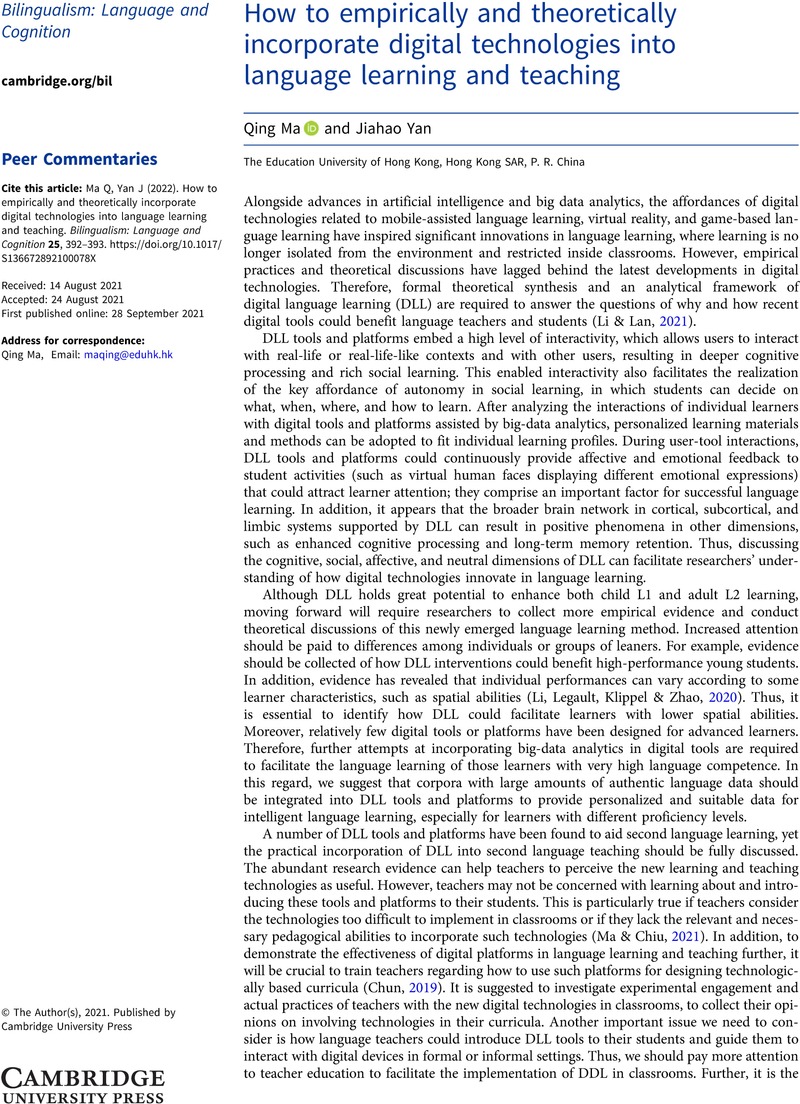Crossref Citations
This article has been cited by the following publications. This list is generated based on data provided by Crossref.
Meng, Shuyu
2022.
Role of politically motivated internet addiction and ideological passion in linking college student's mental health education and wellbeing.
Frontiers in Psychiatry,
Vol. 13,
Issue. ,
Li, Ping
and
Lan, Yu-Ju
2022.
Understanding the Interaction between Technology and the Learner: The Case of DLL.
Bilingualism: Language and Cognition,
Vol. 25,
Issue. 3,
p.
402.
Muthmainnah
Al Yakin, Ahmad
Cardoso, Luís
Elngar, Ahmed A.
Oteir, Ibrahim
and
Al‐Otaibi, Abdullah Nijr
2023.
Handbook of Computational Sciences.
p.
341.
Janjić, Paula
and
Coventry, Kenny R.
2025.
Digital language learning resources: analysis of software features and usage patterns in UK schools.
Frontiers in Education,
Vol. 10,
Issue. ,



